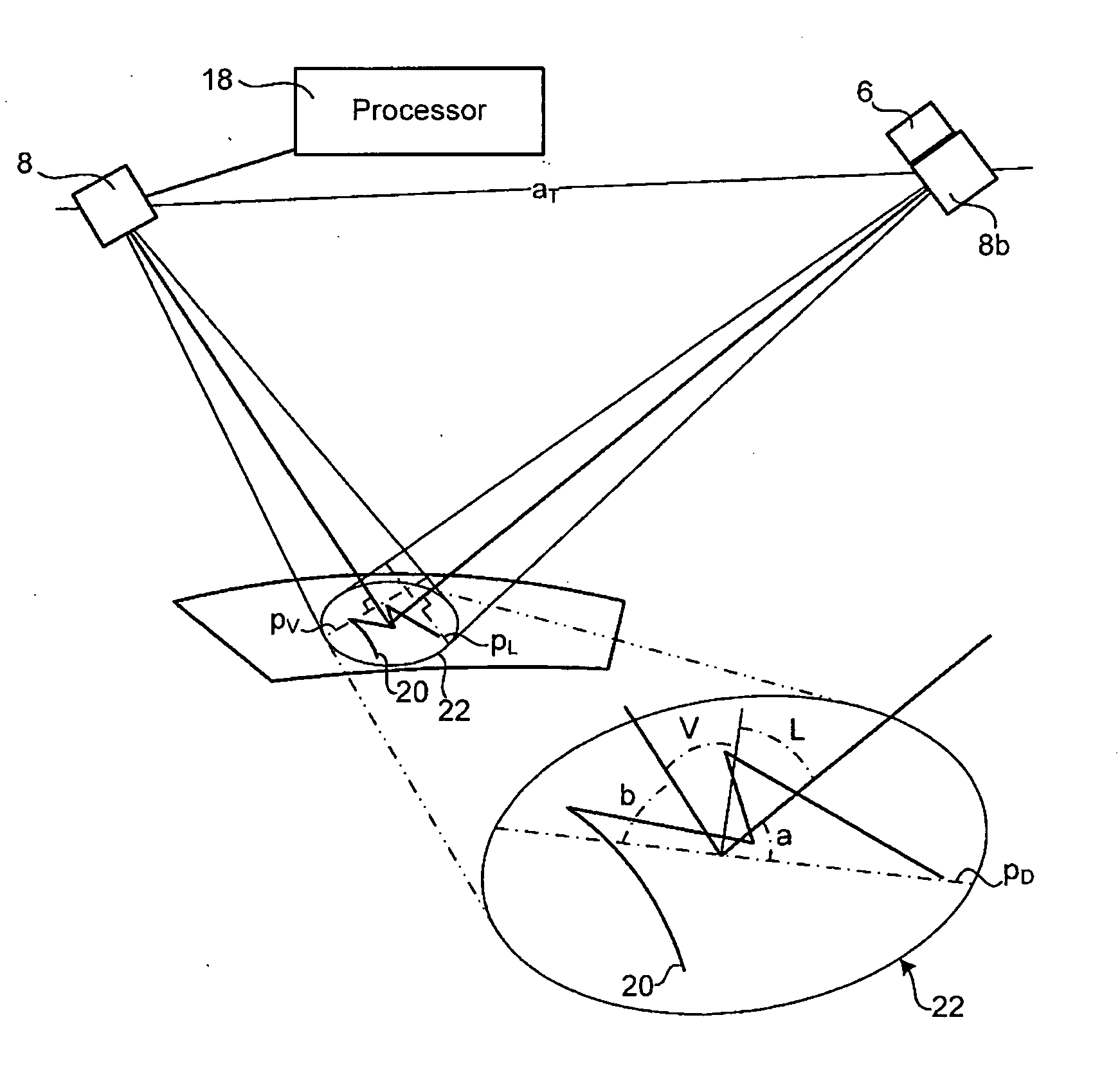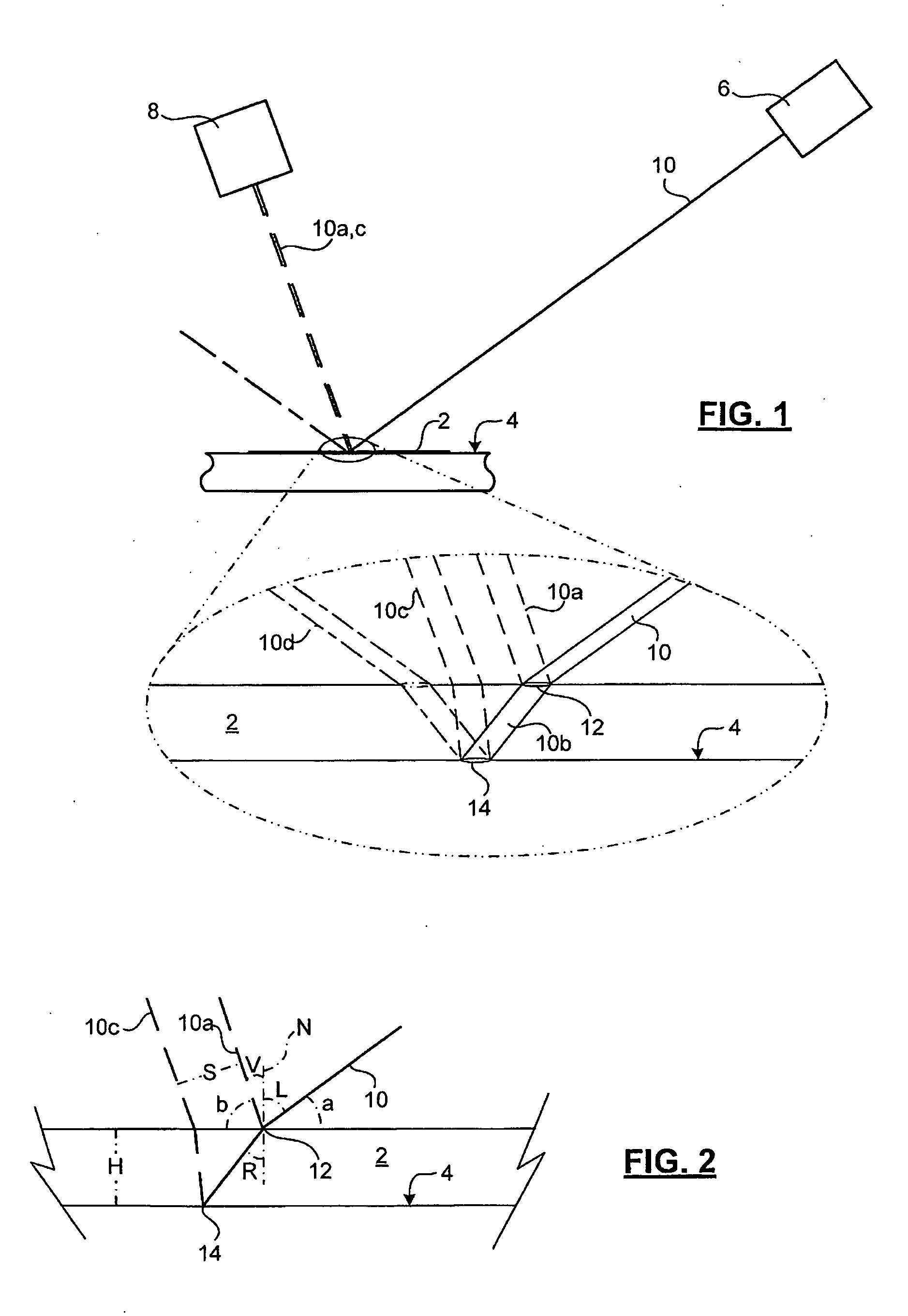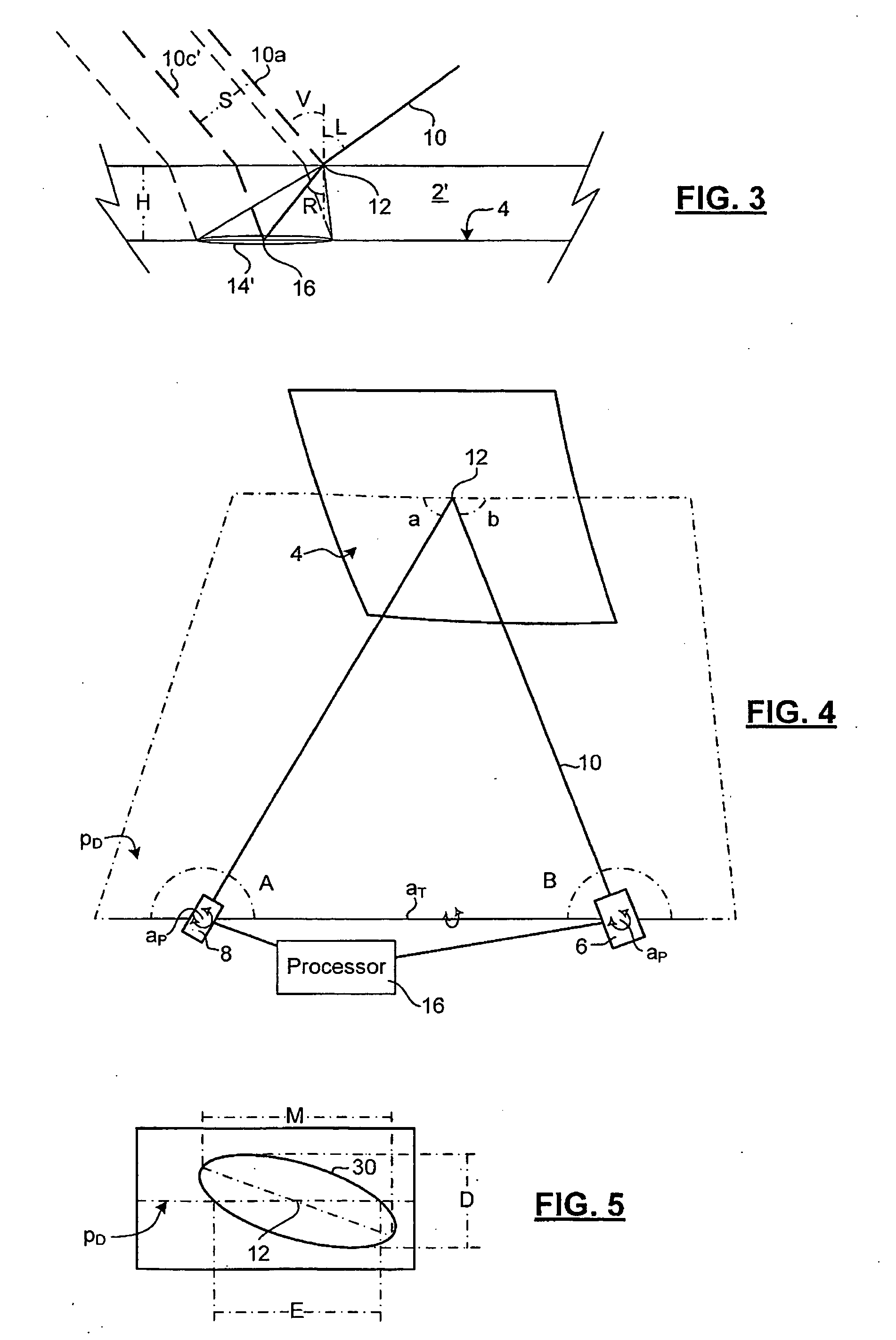Method and apparatus for layer thickness measurement
a technology of layer thickness and measurement method, which is applied in the direction of manufacturing tools, instruments, transportation and packaging, etc., can solve the problems of difficult to quantify high installation and operation cost, and insufficient accuracy of absorption measurement of the thickness of the layer
- Summary
- Abstract
- Description
- Claims
- Application Information
AI Technical Summary
Benefits of technology
Problems solved by technology
Method used
Image
Examples
Embodiment Construction
[0044] The invention provides a technique for detecting a layer on a surface, and if extant, measuring its thickness. The technique is designed to measure ice on a surface, such as an aircraft wing, a road surface, a marine structure (if the layer is thin enough), or ice of various optical properties that form on an external fuel tank of the space shuttle, for example.
[0045] The detection technique of the invention is schematically illustrated in FIG. 1. FIGS. 2 and 3 illustrate geometrical parameters of the system, and illustrate operation of the detection technique in the case of both transparent and diffusing layers 2 / 2′ on a surface 4. The apparatus for detection consists of a laser source 6, and a detector 8, such as a viewing apparatus. Advantageously the invention can be applied at distances requiring a telephoto lens or a telescope, for example, as a part of the viewing apparatus. Preferably the apparatus also includes a video camera, digital still camera, diode array, etc....
PUM
 Login to View More
Login to View More Abstract
Description
Claims
Application Information
 Login to View More
Login to View More - R&D
- Intellectual Property
- Life Sciences
- Materials
- Tech Scout
- Unparalleled Data Quality
- Higher Quality Content
- 60% Fewer Hallucinations
Browse by: Latest US Patents, China's latest patents, Technical Efficacy Thesaurus, Application Domain, Technology Topic, Popular Technical Reports.
© 2025 PatSnap. All rights reserved.Legal|Privacy policy|Modern Slavery Act Transparency Statement|Sitemap|About US| Contact US: help@patsnap.com



